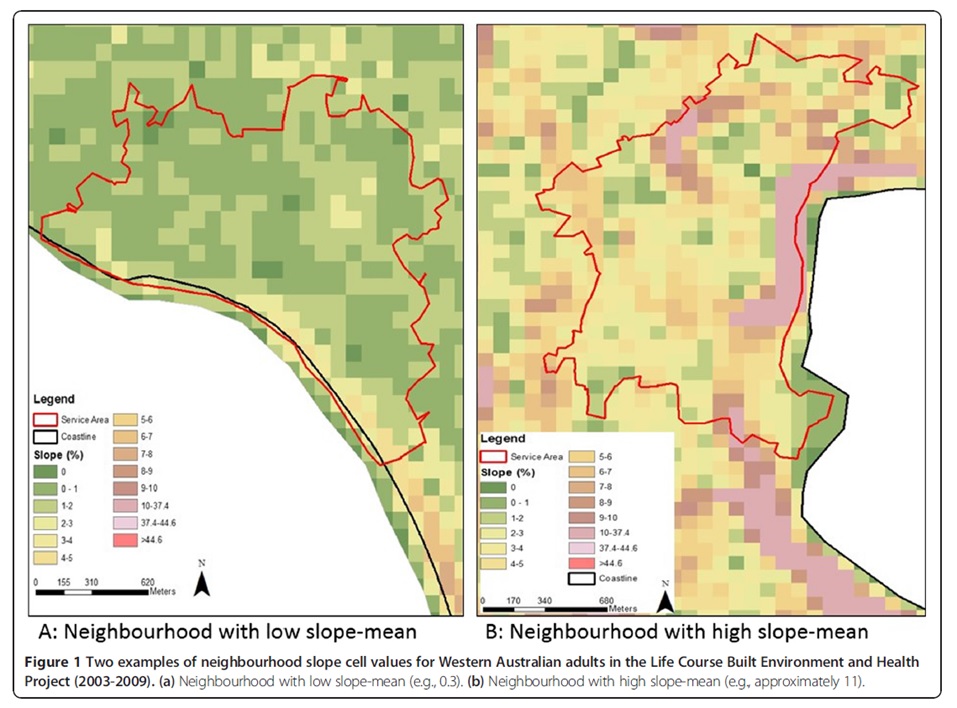This was our second week of presentations, this time looking at Health Geography rather than landscape ecology. My paper looked at the relationship between residential slopes and likelihood of diabetes in Perth, Australia.
Paper reviewed: People living in hilly residential areas in metropolitan Perth have less diabetes: spurious association or important environmental determinant?
Focus of study: Built Environment Factors that affect Diabetes prevalence
Research question: Is there a link between neighborhood slope and likelihood of having diabetes?
Researchers’ Hypotheses:
- People that live in higher-slope areas will have a smaller chance of contracting diabetes, due to higher exertion during any physical activity, such as walking
Methods:
- West Australia 2003-2009 Health Survey data – 11,406 individuals / 964 with Diabetes
- Physical location of every individual -> created 1600m long neighborhood around every home
- 90m DEM map of Perth showing slope placed on top
- 5 groups of confounding variables also collected: socio-economic, distance to important destinations, walkability, diet, amount of time walking
Analysis:
- SPSS software program used to look association between slope and diabetes, and also between diabetes and confounding factors
- 5 models produced, each accounting for more of the confounding factors
Results:
- Strong association found between slope and diabetes, even after accounting for confounding variables – 13% lower odds of having diabetes for every 1% increase in mean slope
Conclusion:
- Paper had many limitations
- The researchers don’t explain how adjusting for confounding factors was done
- association could be false, caused by confounding factors
- slope for each neighborhood was averaged out, may not represent actual walking route slope
- could’ve employed GWR
- 7/10
Other presentations:
The one thing that really struck me with this round of paper reviews is how similar they were in format. For example, a lot, if not most of the papers had Odds Ratios within a Confidence Interval to show relationships, rather than correlation coefficients. Another trend I noticed is that the researchers focused a lot on their own limitations.
It seems like research in Health Geography is focused on trying to be as careful as possible when making conclusions from their research, and looking at association rather than causation, because of how complex health-related issues are.

